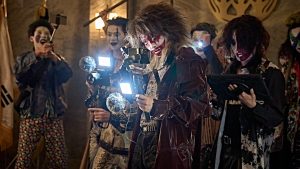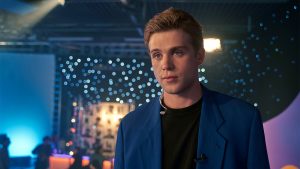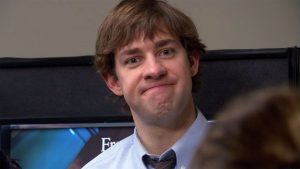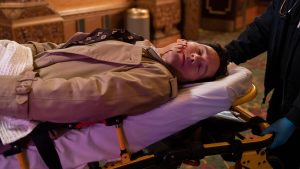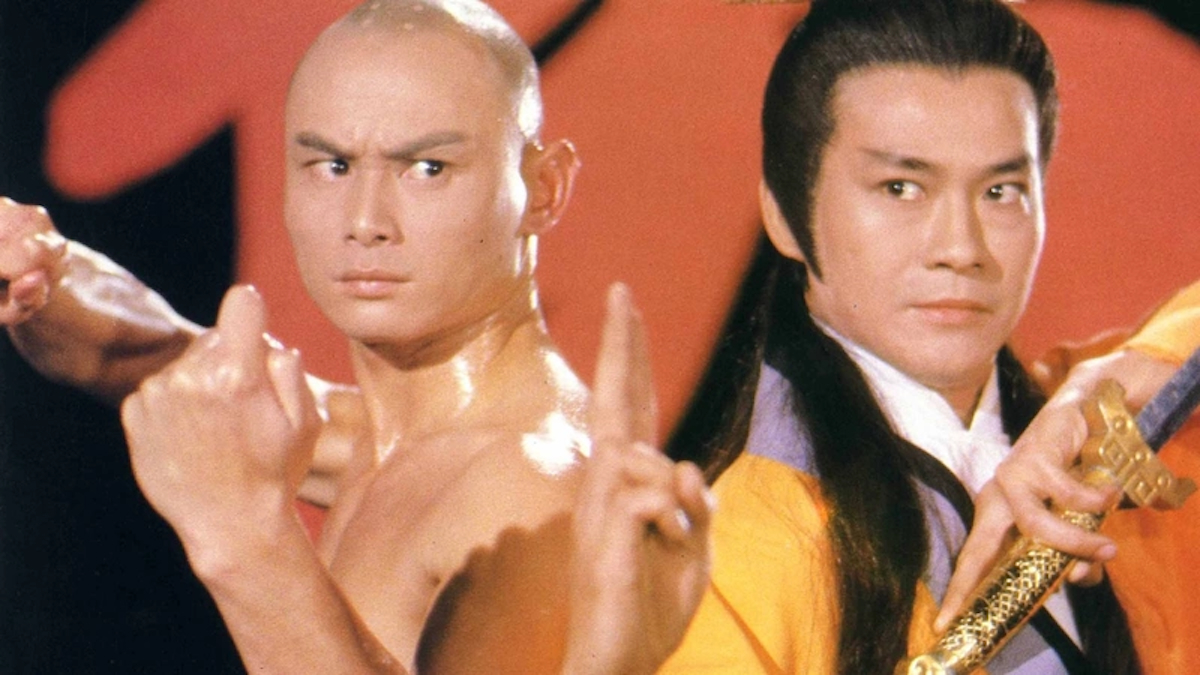
Lee Hoi-Sang is a venerated star of classic Hong Kong action cinema, but only hardcore fans of the genre know him by name. With well over a hundred roles to his credit, he’s easily recognized despite never being a leading man. Typically, he was the lead’s adversary. To make a strong hero, you need a strong villain, and Lee was perfect for that role.
Lee was a genuine master of Wing Chun Kung Fu, which earned him the title of “the King of Fighters.” He was a direct pupil of Grandmaster Ip Man, the same mentor who taught Bruce Lee and who’s fictionalized stories have become a subgenre of martial arts movies unto themselves. It was Lee Hoi-Sang’s martial arts expertise that drew him into the cinematic world, but despite his stardom, he remained a dedicated teacher of Wing Chun Kung Fu and inspired a generation of practitioners around the world.
Lee had a commanding physique, statuesque, cut and yoked. In his early 20s, he competed as a weightlifter and bodybuilder, as well as a swimmer. His long muscular body and his skill at Kung Fu made him a natural for the silver screen. However, he didn’t have a leading man’s face, so he played supporting roles, mostly villains. Lee frequently exaggerated the bushiness of his eyebrows, which supported more villainous parts. He was also bald, so he was cast as a lot of warrior monks. Lee often appeared shirtless onscreen to show off his spectacular physique. All these elements made him instantly recognizable to any fan whether they knew his name or not.
Lee began his film career in 1974 at the beginning of Hong Kong’s golden age of Kung Fu movies. His first credited film was Heroes Two (1974) where he had a supporting role under the pioneering martial arts director, Chang Cheh. By the late 1970s, Hong Kong was a grindhouse for martial arts films and everyone in the business was insanely productive. In 1978, Lee appeared in 18 films and in the following year, he was in an incomprehensible 20 films. In fact, 1979 was a banner year for Lee, including some of his finest work, many of which is showcased here.
In the late ‘80s, he migrated to martial arts television dramas. Consequently, another generation of fans know him from his appearances in such classic TV series as The Legend of Condor Heroes (1994), Journey to the West (1996), and Demi-God and Semi-Devils (1997). He is fondly remembered as Uncle Shen in Come Home Love, one of Hong Kong’s longest running TV sitcoms with some 2200 episodes. Lee’s final film appearance was in the Chinese New Year ensemble comedy, I Love Hong Kong 2012. In 2019, he was recognized by the Hong Kong Stuntmen Association with an Outstanding Contribution Award. He continued to work in television for TVB until quietly retiring last year. While he was never a leading man, here are 10 of Lee Hoi-Sang’s most memorable appearances and fight scenes.
Executioners from Shaolin (1977)
You don’t have to wait long for Lee’s role here. As the opening credits fly by, he plays Master Chi Shan, pitted in a lethal duel against Pai Mei (played by one of the greatest actors to don those white eyebrows, Lo Lieh). It’s surreal, set in a blood red space as Lee attacks Lo with a flurry of iron head strikes, only to be defeated by Lo’s iron crotch suction power. Yes, you read that right—iron crotch suction power—it’s a Kung Fu skill!
The rest of the film is about Chi Shan’s student avenging his master’s murder. This sort of pivotal yet tiny role is a hallmark of most of Lee’s early appearances.
The 36th Chamber of Shaolin (1978)
Widely considered to be one of the greatest Kung Fu movies of all time, The 36th Chamber of Shaolin sees Gordon Liu play San Te, a legendary Shaolin monk who takes refuge in the temple and rises to become one of its strongest proponents. However, in order to graduate from the temple, Liu must face Lee in a ritual temple duel. Liu fights with staff while Lee uses the signature short weapons of Wing Chun, twin butterfly swords. Lee wins their first round, but inevitably Liu develops a way to defeat him.
The 36th Chamber of Shaolin was a breakout showcase for Liu, who would be typecast as a Shaolin monk for years to come, and it spawned a 36th Chamber films franchise where Liu played different characters in thematic sequels. Lee returned to the franchise in Disciples of the 36th Chamber (1985) where he also played a different character.
Enter the Fat Dragon (1978)
Sammo Hung, Jackie Chan’s elder Kung Fu brother, delivers one of the best Bruce Lee impersonations ever, although ironically, he’s not playing a Bruce clone. He’s playing a Bruce fan. Donnie Yen remade this film in 2020, but he wore a fat suit while Hung was genuinely fat. And the plot was very different, but perhaps rightly so.
By today’s standards, Enter the Fat Dragon is horribly dated, most glaringly with Lee’s role. Lee plays a hakgwai—a ‘black ghost’—an offensively racist blackface character replete with a ‘fro wig, red bell bottoms, gold chains, and a purple satin shirt. Such stereotyped depictions appear in many Kung Fu films of that period, perhaps a reaction to the Blaxploitation genre that was happening in Hollywood. Nevertheless, once you get past that, Lee’s fight with Hung is another gem, set in a warehouse of Marlboro boxes that contain Kung Fu weapons instead of cigarettes. How’s that for product placement?
The Incredible Kung Fu Master (1979)
Lee plays the villain Yeung Wai in another Kung Fu comedy featuring Sammo Hung. Both Hung and Chan were trained from childhood in Chinese opera, which is where they get their acrobatic style of fighting. Considering Hung’s girth, his flips and aerials are truly impressive. When facing Lee, it’s length versus width.
Lee plays it straight as a long fist fighter until Hung catches him on the noggin with a pole and raises an absurd egg of a bruise atop Lee’s bald head. Lee retorts with an absurd whirling tornado fist. Despite the lighthearted cartoonish combat, the level of Kung Fu skill is incomparable. The scenes are long and complex, demanding perfect timing and precision. Only true masters like Lee and Hung can make it look so easy and natural.
Last Hurrah for Chivalry (1979)
This is John Woo’s homage to director Chang Cheh under whom he was mentored. Lee plays Pak Chung Tong, who faces off with the two lead protagonists played by Damian Lau and Pak Wai in a candlelit stone chamber. Armed with a guandao lance, Lee owns the two swordsmen for the bulk of the battle, even spitting real fire at them. There’s no mistaking that Lee is doing the fire breathing stunt himself. It’s a fiery display of Lee’s physicality as he dominates his two adversaries, accentuated by an early example of the signature macho cinematography that Woo later delivers in his ballistic violence and balletic gunplay films.
And the ultimate coup de grace in the final fight—that’s got to be the last place anyone wants to get stabbed! Lee took a lot of hard hits like that throughout his career.
Knockabout (1979)
This film marks the first lead role for Jackie Chan’s and Sammo Hung’s younger Kung Fu brother, Yuen Biao. It’s another Kung Fu comedy, as was the fashion in the late ‘70s, this one directed by Hung. Of the three martial brothers, Yuen Biao is the most acrobatic. The film is a slow build as Yuen’s character learns Kung Fu, but ultimately it is an astounding display of his flying skills, making this film a true classic.
Lee isn’t the main villain, but he should’ve been. Lau Kar Wing isn’t quite up to snuff here, not enough to face Yuen and Hung in their prime. Nevertheless, Lee delivers another fight where his bald skull is beaten so badly that it gets comically bruised. In golden age Kung Fu movies, covering a bald head with exaggerated bruises was a common comic trope, and it’s a fate Lee’s characters suffer on several occasions. In Knockabout, it’s so bad that his head looks like the coronavirus.
Magnificent Butcher (1979)
It’s Lee Hoi-Sang versus Sammo Hung—the rematch! But this time, veteran Kung Fu star Kwan Tak-Hing reprises his most famous role as Wong Fei Hung. Kwan played Wong in nearly 80 films, a world record for an actor portraying the same character in film. Like Grandmaster Ip Man, Wong Fei Hung was a real-life master and folk hero whose exploits were fictionalized for film. Sammo Hung plays Wong’s real-life student, the butcher Lam Sai-Wing.
Lee’s calligraphy duel with Kwan is awesome, the kind of mind-blowing Kung Fu choreography that is simply untouchable. Kwan was also a genuine master of calligraphy, and through his acrobatics manages to produce a fine piece of art. That’s no special effect. That’s Kwan and Lee creating beautiful brush strokes between brutal strikes. On top of that, Lee’s final fight with Sammo is a true masterpiece.
My 12 Kung Fu Kicks (1979)
Lee faces off against super-kicker Bruce Leung, who is often unfairly stereotyped as a Bruce Lee imitator. In all fairness, Leung did star in several Brucesploitation films (including 1980’s transparently titled gem, The Clones of Bruce Lee), but like most all the Bruce clones, he is an extremely talented martial artist in his own right. Anyone who dared to fill Bruce’s slippers had to have serious Kung Fu at the start.
Lee plays Kwai, a villain who cripples three masters. In turn, they train Leung for revenge. It’s yet another Kung Fu comedy, packed with sophomoric pratfalls like booger-shooting attacks and sewage pot dumps, but it’s also one of Leung’s strongest performances. And it’s Lee who empowers him as his formidable foil, allowing Leung to fully showboat his skills.
The Young Master (1980)
This is one of Jackie Chan’s tour de force films. He was at the height of his physicality and this film is packed with outrageously clever and jaw-dropping choreography. Lee appears in one fight as one of the thugs, a henchman for the ultimate villain Master Kam (Hwang In-Shik). Paired with another thug, played by another career typecast villain, Fung Hak-On, Lee is a mohawked strongarm who fights with a rope. Lee and Fung attack Chan in a two-against-one street fight, but Jackie quickly gets the upper hand by donning a skirt to conceal his leg attacks.
Shaolin and Wu Tang (1983)
It’s a replay of Lee Hoi-Sang versus Gordon Liu as Lee’s character Fa-Chi tests Liu’s Ta-Chi in a ritual temple duel. Lee even uses his Wing Chun butterfly swords, although Liu swaps out his Shaolin staff for Chinese dao saber. Lee’s mastery of butterfly swords is demonstrated with exemplary vigor as he flips them back and forth with natural ease.
Both The 36th Chamber of Shaolin and Shaolin and Wu Tang are heavily cited as inspirations for the Wu-Tang Clan. RZA and Ol’ Dirty Bastard adopted the name Wu-Tang from this film, and their debut album, Enter the Wu-Tang (36 Chambers), is a clear nod to both movies.
The post 10 Must-See Movies with Martial Arts Legend Lee Hoi-Sang appeared first on Den of Geek.
